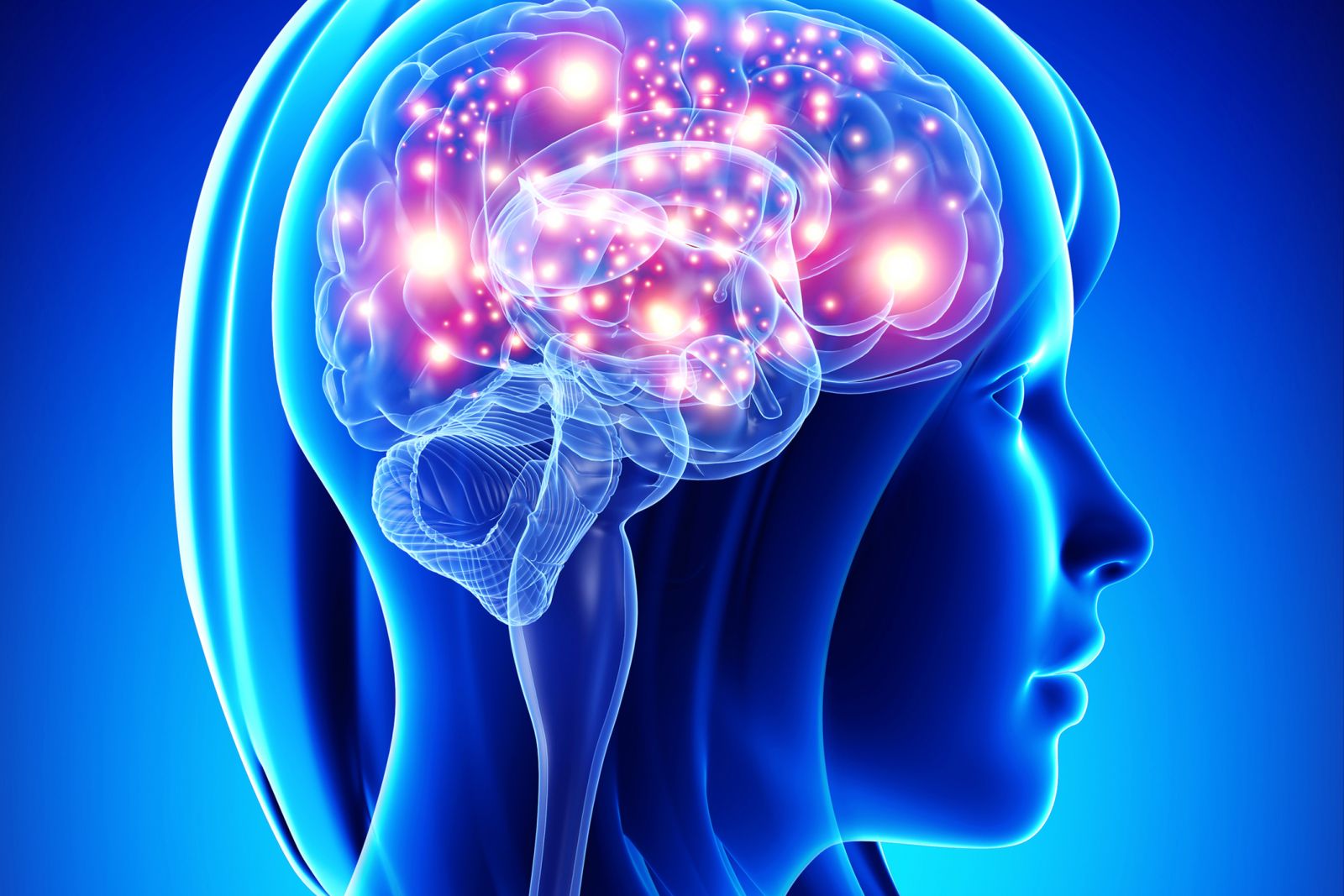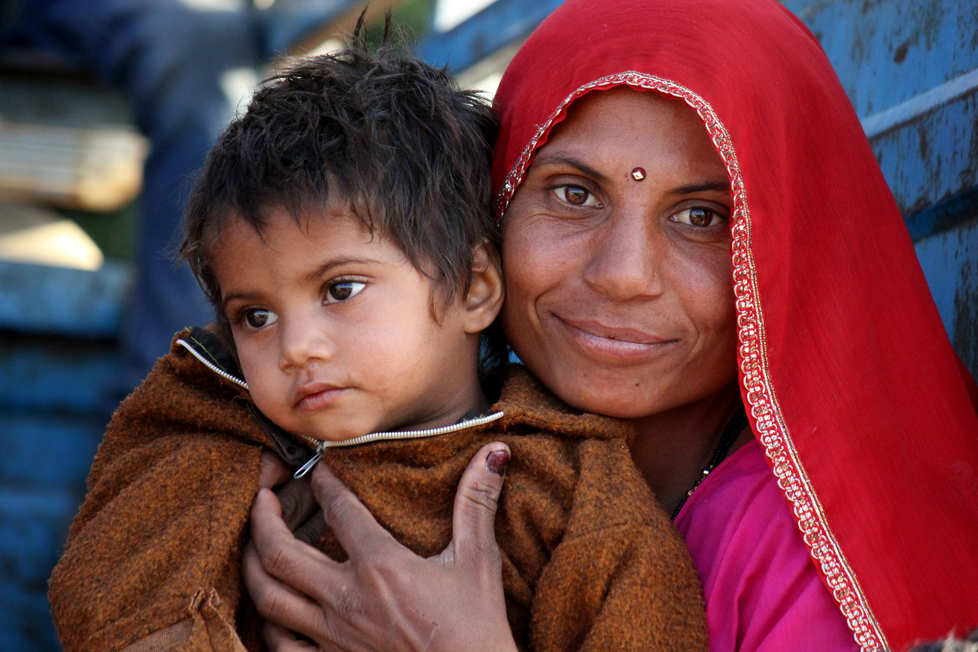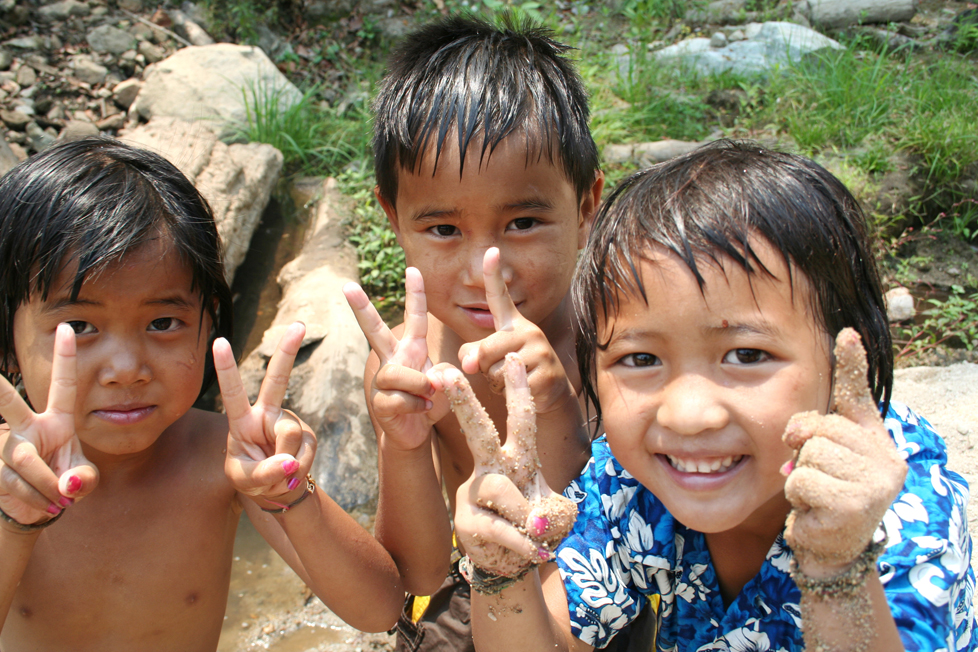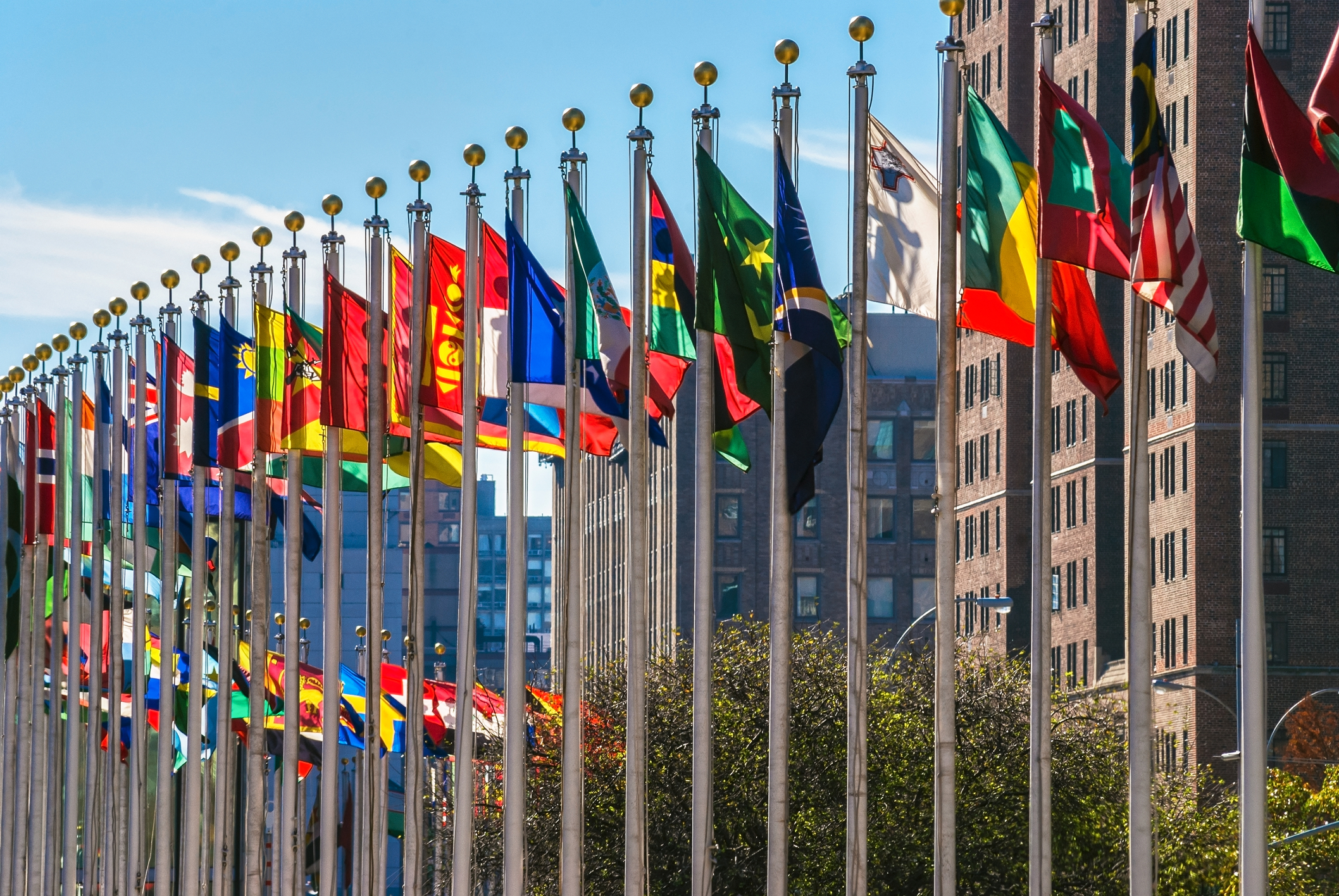 Contributor: Rima Salah, PhD, Chair Early Childhood Peace Consortium (ECPC); Asst Clinical Professor, Yale University
Contributor: Rima Salah, PhD, Chair Early Childhood Peace Consortium (ECPC); Asst Clinical Professor, Yale University
IN PROCESS
Towards a More Peaceful World: The Promise of Early Childhood Development Programs
Salah, R. (2017). Towards a more peaceful world: The promise of early childhood development programs. New Directions for Child and Adolescent Development. Winter 2017. Vol.xxx, Issue xxx., ppxx. Online reprint permission granted by NDCAD.
Introduction
As I write this commentary, “Global citizenship and the role of the United Nations: The promise of the Early Childhood Peace Consortium (ECPC)” to this very important special issue, “Towards a more peaceful world: The promise of early childhood development programs”, I am looking out at the transparent blue water of the Adriatic Sea in Opatija, Croatia. I am also being entertained by the joyful voices of children playing on the beach and swimming in the warm waters of the sea.
I am in this beautiful region to participate in the 69th World Assembly and Conference of “The World Organization for Early Childhood Education (OMEP)”, where the growing global crisis on refugees and migrant children is being seriously considered and debated. Adding to the discussion is UNICEFs
recent report “Uprooted: The growing crisis for refugee and migrant children”. It reports that across the globe, nearly 65 million people have been displaced, 50 million children have migrated across borders or have been forcibly displaced, and 28 million children have been uprooted by horrific conflict and violence (UNICEF, 2016).
Unfortunately, the joyful and merry voices of children transported me to the other side of the Adriatic Sea to the Mediterranean, where the blue waters of the sea witnessed the perilous journeys of uprooted children and families seeking refuge around the world. Images of children’s bodies washed up on the shores of the Mediterranean continue to haunt us; images of children separated from their families continue to haunt us; images of children abducted, physically abused and detained behind bars continue to haunt us. What also continues to haunt and concerns the international community is the lasting negative impact of violence, forced displacement and the disruption of the fabric of communities and families, together with the erosion of protective systems, on young children and its detrimental effect on their development (
Leckman, 2014).
The Voice of Science
Advances in developmental neuroscience are causing a revolutionary shift in the way we think about child development (
Shonkoff, 2016;
Center on the Developing Child, Harvard University, 2017). We now realize that in the first year of life, the brain grows at the pace of 700-1000 new neural connections per second, a pace that is never achieved again. By age 3 years, a child’s brain is twice as active as an adult brain. It is early life experiences, from preconception onward, that determine the capacity of the brain – it structure and function as well as having a direct influence of the child’s future physical health (
Heckman, 2012;
O’Donnell & Meaney, 2017).
While an individual’s genetic endowment is fundamental, parenting provides a legacy that transcends our genes. How a child is nurtured and cared for early in life has a direct impact on brain structure and function as well as physical health of the child (metabolism, telomere length, microbiome). This new knowledge holds significant implications for the future of millions of children living in fragile contexts, worldwide (
VanTieghem & Tottenham, 2017;
ECPC, 2017). It heralds in a new era with windows of opportunities to contribute to sustainable peace through investment in the positive early development of young children (
UNICEF, 2014;
Britto, Gordon, Hodges, Sunar, Kağitçibaşi, & Leckman, 2014).
However, in these critical times, there is insufficient investment in the early years of life as a path to peace, social transformation and violence prevention. As discussed below, this realization led directly to the formation of the ECPC in September 2013 at the United Nations (UN) in New York that brought together over 140 partners from multiple sectors (including civil society, the social and mass media (Sesame Workshop), government officials, multi and bilateral agencies, as well as practitioners and academia), agencies and countries to “create a legacy of sustained peace drawing on the transformative power of early child development”. The ongoing work of the members of the ECPC also served as the inspiration for this special issue of
New Directions in Child and Adolescent Development. Reviewed in this special issue and in the recent The Lancet Series, Advancing Early Child Development: From Science to Scale (
The Lancet, 2016), are multiple promising early childhood development programs that have been developed, evaluated and disseminated across the globe - from Afghanistan and Pakistan to South Africa, Nigeria and Cote d’Ivoire, from Turkey and Lebanon to Chile, Colombia and Brazil (
Black et al., 2017;
Britto et al., 2017;
Richter et al., 2017). The holistic and inclusive approach of these programs aims to mitigate trauma, promote emotional regulation and sensitivity to others, eliminate harsh punishment, and to encourage the formation of positive social relationships within families and communities. This whole approach holds crucial links to strengthen social cohesion and build peace in society (
Leckman, Panter-Brick, & Salah, 2014).
In this emerging era of building a world of peace and development, we have every opportunity to make this transformative shift and elevate early childhood development on the Peace and Development Agenda.
It is the time to raise the voice of science to join the voice of “We the Peoples”.
The Voice of “We the Peoples”
On the 26th of June, 1945, world leaders met in San Francisco, United States, and signed the Charter of the United Nations. The first phrase of this foundational treaty reads, “We the peoples of the United Nations, determined to save succeeding generations from the scourge of war, which twice in our lifetime has brought untold sorrow to mankind, and to reaffirm faith in fundamental human rights, in the dignity and worth of the human person, in the equal rights of men and women and on nations large and small …” It further reads, ”And for these ends, to practice tolerance and live together in peace with one another as good neighbors, and to unite our strength to maintain international peace and security …” (
United Nations, 1945; Preamble, p. 3).
As the United Nations (UN) continued its journey to further advance its ideals and fulfill its goals in the spirit of its Charter, the General Assembly adopted on the 20th of November 1997, the ground-breaking resolution 52/15, proclaiming the year 2000 as the “International Year for the Culture of Peace” (
United Nations, 1997). Its resolution 53/25, adopted on the 10th of November 1998, proclaimed the period 2001-2010 as the “International Decade for a Culture of Peace and Non-Violence for the Children of the World” (
United Nations 1998).
On the 13th of September 1999, the General Assembly adopted a “Declaration and Program of Action on the Culture of Peace” (United Nations, 1999). The Declaration recalled the Constitution of the United Nations Educational, Scientific and Cultural Organization (UNESCO) that states “since wars begin in the minds of men, it is in the minds of men that the defenses of peace must be constructed”, which underlines the important role that UNESCO continually plays in the promotion of the global Culture of Peace (
United Nations, 1999; Section A).
The Culture of Peace was defined as “a set of values, attitudes, traditions and modes of behavior and ways of life” based on ending violence and promotion and practice of non-violence through education, dialogue and cooperation. It also calls to adhere to the principles of freedom, justice, democracy, tolerance, cultural diversity, dialogue and understanding at all levels of society and among nations (
United Nations, 1999; pp. 2-4).
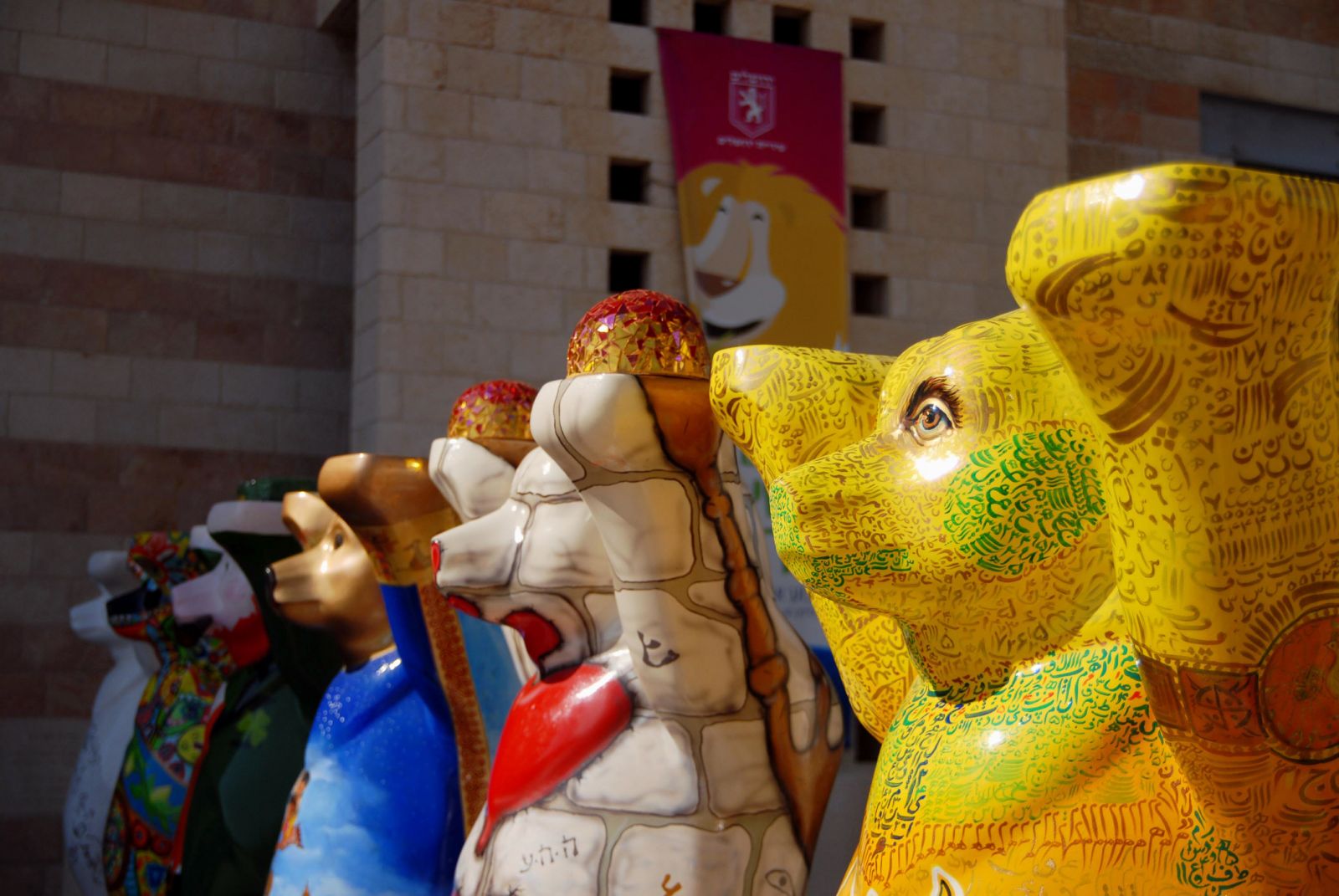
While the Declaration on the Culture of Peace serves to guide the activities of governments, international organizations and civil society to promote and strengthen a culture of peace in the new Millennium, the Program of Action prioritizes eight areas of work to be implemented at national, regional and international levels, which include actions to foster a culture of peace through education. This is to “ensure that children, from an early age benefit from education on the values, attitudes, modes of behavior and ways of life to enable them to resolve any dispute peacefully and in a spirit of respect for human dignity and of tolerance and non-discrimination, and to involve children in activities designed to instill in them the values and goals of a culture of peace” (
United Nations, 1999; pp. 2, 8, 10).
One of the major tenants of the culture of peace is that every one of us is important to make the transformation required to secure a culture of peace, and hence, promote the concept of global citizenship (
Chowdhury, 2014).
The concept of Global Citizenship was further reinforced in the “Global Education First Initiative” that was launched by the then United Nations Secretary-General, Mr. Ban Ki- Moon in September 2012. The five-year program had three major priorities: Put every child in school, improve quality of learning, and foster global citizenship (
United Nations, 2012-16). In the launch of this initiative and its aim to raise the political profile of education and strengthen the global movement to achieve quality education and generate sufficient funding, the Secretary-General pronounced, “We must foster global citizenship. Education is about more than literacy and numeracy. It is also about citizenry. Education must fully assume its essential role in helping people to forge more just peaceful and tolerant societies.”
Subsequent resolutions adopted every year have reaffirmed the commitment of the United Nations to build and promote the Culture of Peace. These include the “
2030 Agenda for Sustainable Development” and the “
Sustaining Peace Resolutions” that captured its vision. In the historic and memorable meeting of the General Assembly on the 25th of September 2015, all member states adopted the transformative 2030 Agenda. Its 17 Goals, which range from ending poverty in all forms everywhere, to ensuring inclusive and equitable quality education and promoting life-long learning opportunities for all, to achieving gender equality and to promote peaceful and inclusive societies for sustainable development (
United Nations, 2015). The ground-breaking “Sustaining Peace Resolutions” further confirmed the indivisible agendas of sustaining peace and sustainable development (
United Nations, 2016).
The Promise of the Early Childhood Peace Consortium (ECPC)
In this new era of peace that promotes the participation of all members of society in peacebuilding efforts, the need to shape innovative and transformative approaches that engage children and families in the service of peace, has become clear and essential.
In laying the foundation for sustainable peace, we need to put the interests of children and families in the heart of peacebuilding efforts so that they can play their role as agents of change for peace.
As mentioned above, to answer the call for action, the ECPC was launched to join forces with the international community to advance global and national efforts to prevent violence and build peace through the transformative power of early childhood development. It was founded on the ideas that the global community must address the root causes of violence and conflict, and how children and families can be agents of change for peace. The Consortium’s vision is to create an inclusive movement for peace, social justice and prevention of violence through using early childhood development strategies (
Ponguta & Zonderman, 2013,
ECPC, 2017). The goals and vision of the ECPC are well aligned with the vision of the “United Nations Declaration on the Culture of Peace”, the goals of the “2030 Agenda for Sustainable Development” and the “Sustaining Peace Resolutions”.
More recent efforts of the ECPC have led to the development of a document aimed to influence policy-makers and government officials (
ECPC, 2017). This brief clearly documents the societal risks that result when early childhood development services are lacking and demonstrates how early child development services contribute to the development of more peaceful homes, communities, and societies through increasing social cohesion, equality and economic productivity.
Conclusion
The promise of ECPC is to bring on the path to peace and development, the experience of early child development. This can be accomplished by linking emerging knowledge from bio-behavior and environment sciences with existing scientific evidence, increasing investment in and advocating for the creation of local and sustainable programs as well as policies and systems for peacebuilding and the reduction of violence, through early childhood development programs.
We have the science, the knowledge, technology and experience to build a world without violence. What we need is an unfailing vision and an unwavering commitment by the global community, as well as a strong partnership for and with children and their families.
There is no better time than now to unite our strengths to erect the building blocks of a peaceful future for all children. Let us raise children to be global citizens and drivers of the culture of peace!
 Contributor: Rima Salah, PhD, Chair Early Childhood Peace Consortium (ECPC); Asst Clinical Professor, Yale University
Contributor: Rima Salah, PhD, Chair Early Childhood Peace Consortium (ECPC); Asst Clinical Professor, Yale University